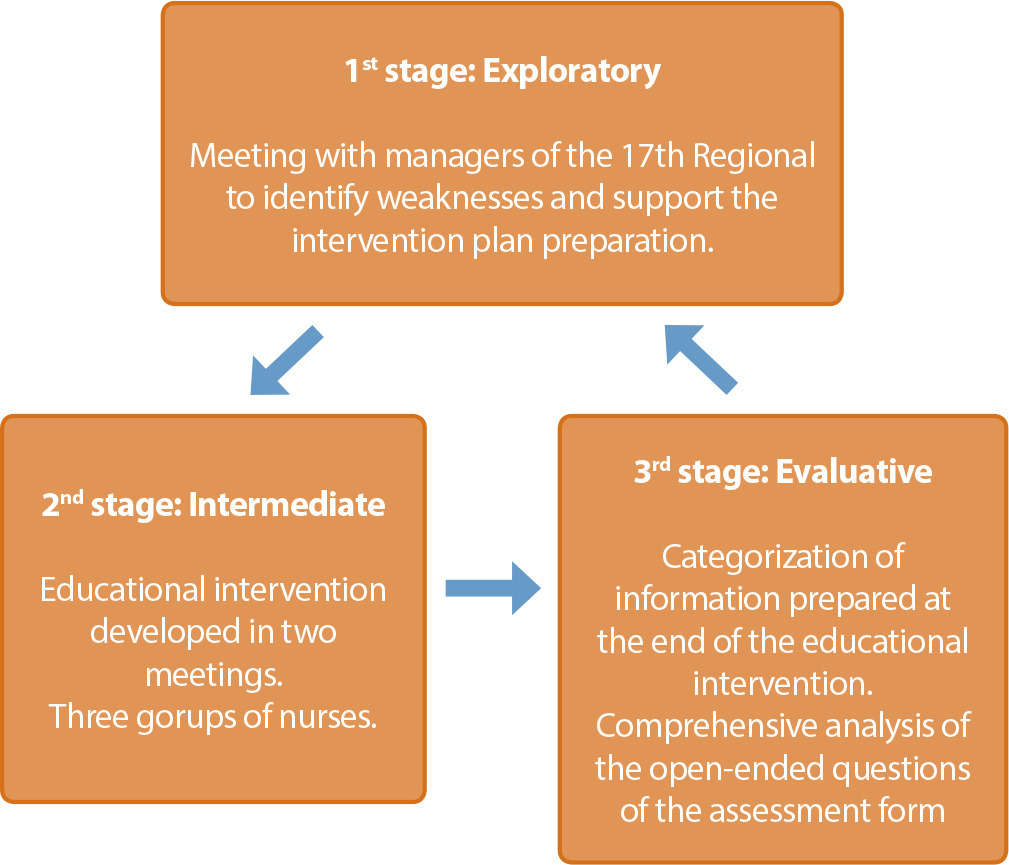-
ORIGINAL ARTICLE10-09-2023
Construction and validation of a scenario for recognizing sepsis by nursing students: a methodological study
Revista Brasileira de Enfermagem. 2023;76(4):e20220537
Abstract
ORIGINAL ARTICLEConstruction and validation of a scenario for recognizing sepsis by nursing students: a methodological study
Revista Brasileira de Enfermagem. 2023;76(4):e20220537
DOI 10.1590/0034-7167-2022-0537
Views0See moreABSTRACT
Objective:
To build and validate a clinical simulation scenario for teaching Nursing students about early recognition of signs and symptoms of sepsis in the context of the emergency unit.
Methods:
Methodological study developed in two phases: construction of a simulated scenario and content validation by expert judges. For data analysis, the Content Validity Index (CVI) was calculated considering agreement equal to or greater than 80%. The minimum acceptable CVI value for scenario validation was 1.0.
Results:
The simulation scenario proved to be appropriate, with a global Content Validity Index equal to 1. Some adjustments related to the clarity of the wording were necessary, as suggested by the judges. Conclusions: A medium-complexity, high-fidelity scenario was successfully constructed and validated for teaching early recognition of sepsis signs and symptoms.
-
EXPERIENCE REPORT10-09-2023
Service organization protocol for coping with undergraduate students’ psychological distress: a collective construction
Revista Brasileira de Enfermagem. 2023;76(4):e20220535
Abstract
EXPERIENCE REPORTService organization protocol for coping with undergraduate students’ psychological distress: a collective construction
Revista Brasileira de Enfermagem. 2023;76(4):e20220535
DOI 10.1590/0034-7167-2022-0535
Views0See moreABSTRACT
Objective:
to report on the experience of the elaboration process of a service organization protocol for coping with public undergraduate students’ psychological distress in the countryside of São Paulo.
Method:
experience report on protocol production, an action research product, carried out according to the health care and service organization protocol model, made possible by remote meetings with 33 professionals linked to the management and services of the university’s health and social assistance departments.
Results:
collective protocol production provided an opportunity for an institutional agreement on educational, therapeutic and support actions, to be developed in groups or individually with students, with provision for permanent education with civil servants.
Final considerations:
this experience made it possible to list specific actions to face undergraduate students’ psychological distress, bringing health professionals closer to those in management, promoting the exchange of concepts and practices to re-signify and transform the work developed.
-
ORIGINAL ARTICLE10-09-2023
Performance of Family Health Strategy Nurses in LGBT+ Healthcare
Revista Brasileira de Enfermagem. 2023;76(4):e20220514
Abstract
ORIGINAL ARTICLEPerformance of Family Health Strategy Nurses in LGBT+ Healthcare
Revista Brasileira de Enfermagem. 2023;76(4):e20220514
DOI 10.1590/0034-7167-2022-0514
Views0See moreABSTRACT
Objective:
To analyze the role of Family Health Strategy (FHS) nurses in the health care of LGBT+ individuals.
Methods:
This qualitative study is based on Institutional Analysis. Data was collected in August 2021 through semi-structured interviews with 14 Family Health Strategy nurses from municipalities in the state of São Paulo. The data was processed using the IRaMuTeQ® software and analyzed lexically.
Results:
The textual corpus gave rise to three themes, which addressed the nurses’ practice, the difficulties and challenges they face in providing care to LGBT+ individuals, and the direct association of LGBT+ individuals with sexually transmitted infections.
Conclusion:
Lack of preparedness, access to information, and the need for expanded listening skills are still gaps in the performance of FHS nurses in caring for LGBT+ individuals. However, fostering acceptance and building strong relationships have been effective strategies in bridging the gap in nursing care for the LGBT+ community.

-
ORIGINAL ARTICLE10-09-2023
Perceived stress by mototaxi drivers and its relationship with sociodemographic and occupational characteristics
Revista Brasileira de Enfermagem. 2023;76(4):e20220505
Abstract
ORIGINAL ARTICLEPerceived stress by mototaxi drivers and its relationship with sociodemographic and occupational characteristics
Revista Brasileira de Enfermagem. 2023;76(4):e20220505
DOI 10.1590/0034-7167-2022-0505
Views0See moreABSTRACT
Objective:
To investigate the association of sociodemographic and occupational characteristics with a high level of perceived stress in motorcycle taxi drivers.
Method:
Cross-sectional study carried out with motorcycle taxi drivers who answered instruments on sociodemographic and occupational variables – Perceived Stress Scale, Job Content Questionnaire and Effort-Reward Imbalance. Descriptive statistics, Pearson’s chi-square test and Poisson regression with robust variance were used. Statistical significance was 5%.
Results:
Of the 800 motorcycle taxi drivers, 46.8% had a high level of perceived stress. In the multivariate analysis, a high level of stress was associated with low control over work (PR=7.76; 95%CI=5.19-11.61), low social support at work (PR=3.87; 95%CI =2.95 5.08), working hours longer than eight hours a day (RP=1.47; 95%CI=1.21-1.78) and monthly income less than or equal to two minimum wages (PR=1.34;95%CI=1.13-2.58).
Conclusion:
Long working hours, occupational stressors and low income were associated with a high level of perceived stress. Public policies and interventions to minimize occupational stressors are essential.
-
ORIGINAL ARTICLE10-09-2023
Spatial and temporal analysis of tuberculosis incidence in Guinea-Bissau, 2018 to 2020
Revista Brasileira de Enfermagem. 2023;76(4):e20220481
Abstract
ORIGINAL ARTICLESpatial and temporal analysis of tuberculosis incidence in Guinea-Bissau, 2018 to 2020
Revista Brasileira de Enfermagem. 2023;76(4):e20220481
DOI 10.1590/0034-7167-2022-0481
Views0See moreABSTRACT
Objective:
to analyze the epidemiological profile, spatial and temporal distribution of tuberculosis in Guinea-Bissau from 2018 to 2020.
Methods:
an ecological study, carried out in Guinea-Bissau, considering new cases of tuberculosis. Spatial analysis of areas was used to verify tuberculosis distribution in the country, and time series were used to identify incidence evolution over the years of study.
Results:
a total of 6,840 new cases of tuberculosis were reported. Tuberculosis incidence rate in the country ranged from 36.8 to 267.7 cases/100,000 inhabitants, with emphasis on the regions of Bissau and Biombo (over 90 cases/100,000). By using time series, it was possible to observe an increase in case incidence over the years of study.
Conclusions:
the study made it possible to identify the epidemiological profile of tuberculosis in Guinea-Bissau, spatial distribution heterogeneity, in addition to identifying the disease evolution over the years of investigation.
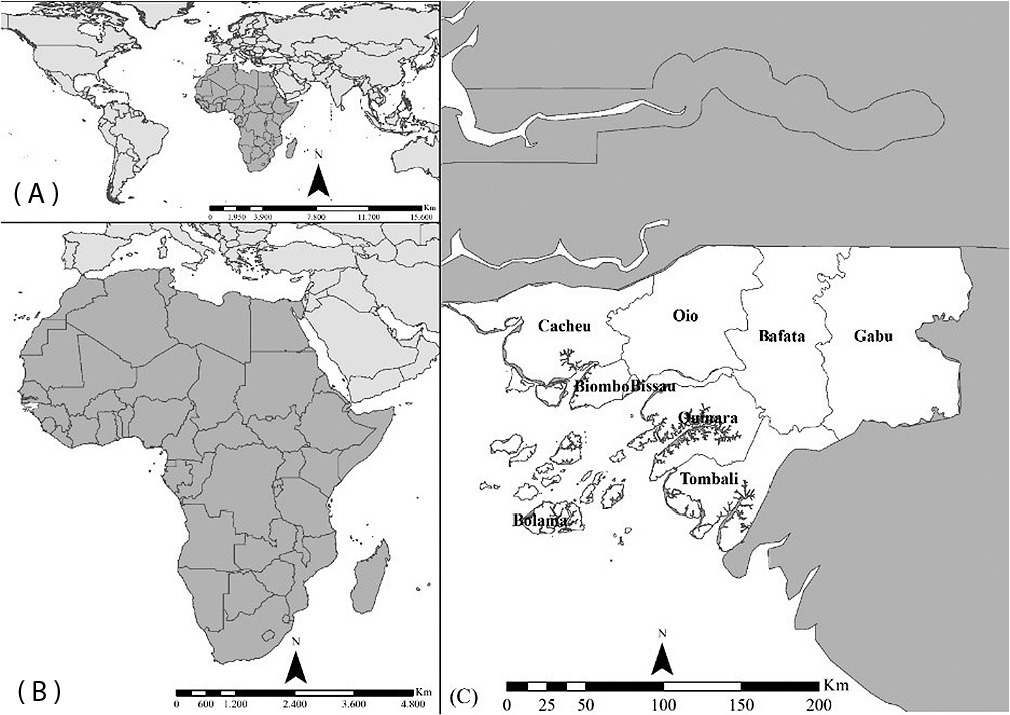
-
ORIGINAL ARTICLE10-09-2023
Eating habits: what foods do children between 12 and 36 months consume?
Revista Brasileira de Enfermagem. 2023;76(4):e20220393
Abstract
ORIGINAL ARTICLEEating habits: what foods do children between 12 and 36 months consume?
Revista Brasileira de Enfermagem. 2023;76(4):e20220393
DOI 10.1590/0034-7167-2022-0393
Views0See moreABSTRACT
Objective:
to identify toddlers’ eating habits.
Method:
a cross-sectional study of quantitative analysis, with a sample of 808 toddlers who attended day care centers in the district of Viseu, Portugal, between November 2018 and September 2019. Data were collected using a questionnaire directed at parents.
Results:
the prevalence of children who ate six meals a day was 42.8%, and 42.5%, those who ate five meals. It was found that 2.0% of children consumed chocolates, 1.0%, desserts, and 0.4%, carbonated beverages, daily. On average, dairy product (M=5.61; SD=2.62) and meat/fish/egg (M=4.80; SD=3.57) consumption was higher than recommended, while fat (M=0.48; SD=0.40), legume (M=0.49; SD=0.45), vegetable (M=1.18; SD=0.87) and water (M=0 .51; SD=0.29) consumption was lower.
Conclusions:
there was a higher or lower consumption than recommended for some foods, highlighting the need to implement nursing intervention programs aimed at promoting healthy eating habits in toddlers and families.
-
REVIEW10-09-2023
Self-care guidelines for patients in the post-hematopoietic stem cell transplantation period: a scoping review
Revista Brasileira de Enfermagem. 2023;76(4):e20220383
Abstract
REVIEWSelf-care guidelines for patients in the post-hematopoietic stem cell transplantation period: a scoping review
Revista Brasileira de Enfermagem. 2023;76(4):e20220383
DOI 10.1590/0034-7167-2022-0383
Views0ABSTRACT
Objective:
To map the evidence on self-care guidelines for patients in the post-hematopoietic stem cell transplantation (HSCT) period.
Method:
Scoping review supported by Joanna Briggs Institute recommendations, with searches conducted between March and April 2022 in national and international databases and repositories of theses and dissertations.
Results:
Of the 11 studies that composed the final sample, the guidelines had a social and personal aspect, as post-transplant patients need to follow numerous essential recommendations for the prevention of infections and complications for successful treatment and improved quality of life.
Conclusion:
Knowing the self-care guidelines that must be performed by post-HSCT patients is fundamental for the nursing team to provide the necessary information for care outside the controlled environment of the hospital, in addition to minimizing episodes of infection, death, and increasing the survival and quality of life of transplant recipients.
Keywords:Health EducationHematopoietic Stem Cell TransplantationNursing CarePatient Discharge SummariesSelf-CareSee more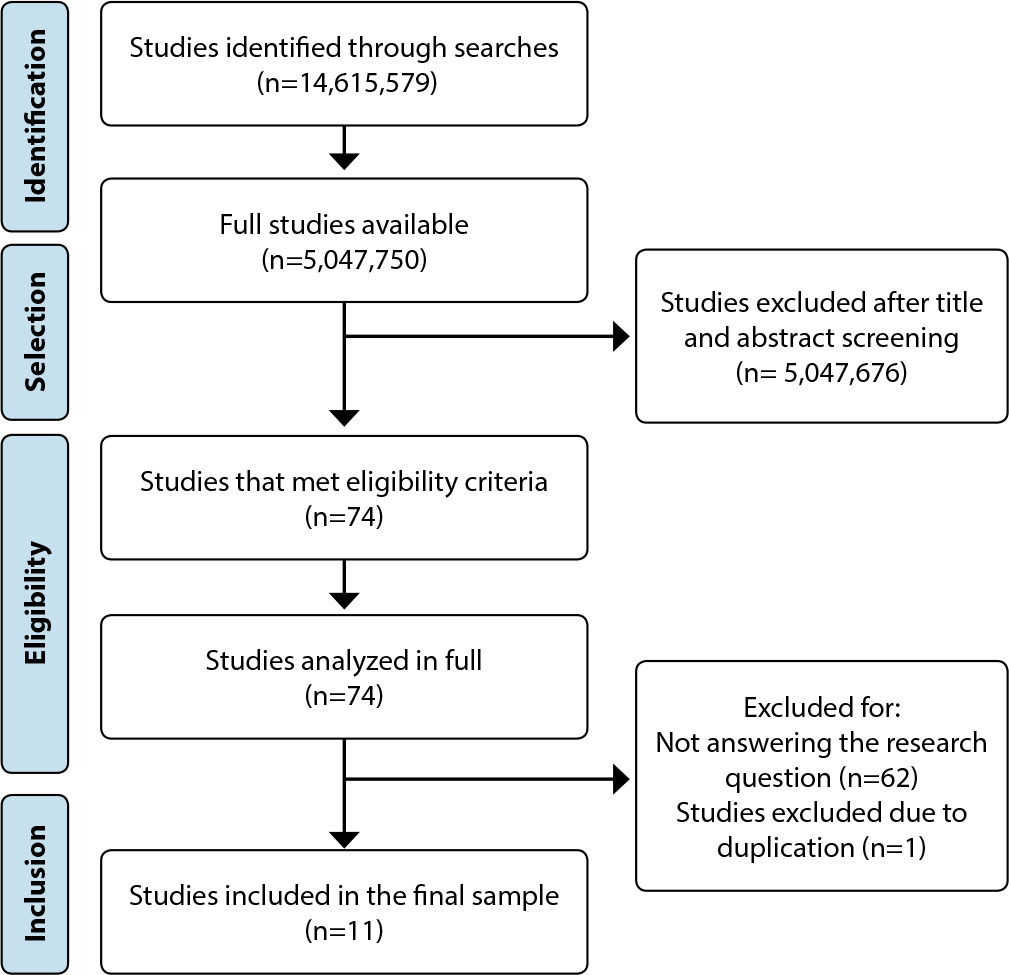
-
Factors associated with immunization against Hepatitis B among workers of the Family Health Strategy Program
Revista Brasileira de Enfermagem. 2015;68(1):84-92
Abstract
Factors associated with immunization against Hepatitis B among workers of the Family Health Strategy Program
Revista Brasileira de Enfermagem. 2015;68(1):84-92
DOI 10.1590/0034-7167.2015680112p
Views0See moreObjective:
to investigate the report of vaccination against Hepatitis B, verification of immunization and the factors associated with dosages of anti-HBs.
Method:
we collected blood samples from those reported that they had one or more doses of the vaccine. We evaluated the association of the dosage of anti- HBs with sociodemographic conditions, occupational and behavioral. The associations were verified by Mann Whitney and Kruskal Wallis and correlation Spermann by linear regression using SPSS® 17.0.
Results:
among the 761 respondents, 504 (66.1%) were vaccinated, 52.5 % received three doses, 30.4 % verified immunization. Of the 397 evaluated for the determination of anti-Hbs, 16.4% were immune.
Conclusion:
it was found that longer duration of work was associated with higher levels of anti-HBs, while levels of smoking were inversely associated with anti-HBs. These workers need for vaccination campaigns.
-
The decreasing number of cigarettes during psychiatric hospitalization: intervention or punishment?
Revista Brasileira de Enfermagem. 2015;68(1):76-83
Abstract
The decreasing number of cigarettes during psychiatric hospitalization: intervention or punishment?
Revista Brasileira de Enfermagem. 2015;68(1):76-83
DOI 10.1590/0034-7167.2015680111p
Views0See moreObjective:
To identify the mental disorders carriers’ perception, the smokers ones, about the decreasing number of cigarettes during psychiatric hospitalization.
Method:
Exploratory study with 96 hospitalized carriers of mental disorders who are smokers: G1 (34 subjects hospitalized when was allowed one cigarette by hour) and G2 (62 subjects hospitalized when it was reduced to eight cigarette by day). Semi-structured questionnaire. Thematic content analysis.
Results:
The G1 admitted satisfaction with the restriction – smoking during hospitalization as entitlement. The G2 resists the restriction change occurred without dialogue or support. In spite of the difficulties, some attitude changes about the cigarette were noticed such as increase of the responsibility, discovery of the ability to reduce smoking and the meaning of its role.
Conclusion:
Some subjects understand the smoking health policy change as punishment, while others as opportunity to think about the role of cigarette in their life.
-
Family functionality in oldest old household residents
Revista Brasileira de Enfermagem. 2015;68(1):68-75
Abstract
Family functionality in oldest old household residents
Revista Brasileira de Enfermagem. 2015;68(1):68-75
DOI 10.1590/0034-7167.2015680110p
Views0See moreObjective:
the aim of this study was to identify factors associated with family functionality of non-institutionalized long-lived subjects, who were residents in Goiânia (GO), Brazil.
Method:
this was a population-based epidemiological study with cross-sectional outline. Evaluation scales of the functional and cognitive capacities were used. Family dynamics was measured using the Adaptation, Partnership, Growth, Affection, and Resolve (APGAR) instrument by making home interviews with 131 long-lived individuals.
Results:
there was prevalence of the female gender, average of age of 83.87 years old, widowhood condition, and residence in a big family, primary schooling, and self-perception of regular health. A great amount showed independence for self-care and partial dependence for daily life instrumental activities. Family functionality prevailed with score average of 9.06 points.
Conclusion:
in conclusion, family functionality in long-lived subjects is associated with self-perception of poor/bad health, osteoporosis, and fall. Results allowed characterizing long-lived subjects’ family functionality with the aim of valuing and prioritizing family as a caregiver.

-
Prevalence of non-adherence to antihypertensive pharmacotherapy and associated factors
Revista Brasileira de Enfermagem. 2015;68(1):60-67
Abstract
Prevalence of non-adherence to antihypertensive pharmacotherapy and associated factors
Revista Brasileira de Enfermagem. 2015;68(1):60-67
DOI 10.1590/0034-7167.2015680109i
Views0See moreObjective:
the aim of the study was to determine the prevalence of non-adherence to antihypertensive drug treatment and its association with factors bio-socio-economic and welfare.
Method:
it was a descriptive, cross-sectional study, performed with 422 hypertensive individuals. Data were collected through home interviews, conducted between December 2011 and March 2012.
Results:
the results showed that the respondents were mostly female, married, elderly, low income and little time of diagnosis. Were considered non adherent to medication 42.65% of participants. Non-Caucasian hypertensive patients, with fewer than eight years of schooling, who did not regularly attend doctor’s appointments, took more than two anti-hypertensive medications and did not have private health insurance, showed higher likelihood of not complying with the drug treatment.
Conclusion:
these findings suggest that hypertensive patients with unfavorable socioeconomic characteristics and difficulty of access to the service require different interventions in order to encourage them to adhere to medication treatment.
-
Adherence and knowledge about the use of personal protective equipment among manicurists
Revista Brasileira de Enfermagem. 2015;68(1):52-59
Abstract
Adherence and knowledge about the use of personal protective equipment among manicurists
Revista Brasileira de Enfermagem. 2015;68(1):52-59
DOI 10.1590/0034-7167.2015680108i
Views0See moreObjective:
this study aimed to assess adherence and knowledge of manicures/pedicures on the use of Personal Protective Equipment (PPE).
Methods:
it was a survey with 235 manicures/pedicures in salons, Belo Horizonte/Brazil. Data were analyzed with the software Statistical package for the social sciences (17.0), using descriptive statistics, chi-square and logistic regression.
Results:
the adherence and the knowledge of the professional were evaluated using the median of the results, obtaining 52% and 63% respectively. The professionals younger than 31 were more likely (2.54 times) to adhere to PPE and those who claimed to have done biosafety course and to use uniform during work, had better chance of understanding (2.86 and 3.12 times, respectively). The majority (83.4 %) stated that the use of PPE should occur for all procedures, meanwhile 71.5 % cited not use them.
Conclusions:
the results indicate the poor adherence to PPE, strengthen occupational biological risk and need for training of these professionals.
-
Predictive value of the Manchester Triage System: evaluation of patients’ clinical outcomes
Revista Brasileira de Enfermagem. 2015;68(1):45-51
Abstract
Predictive value of the Manchester Triage System: evaluation of patients’ clinical outcomes
Revista Brasileira de Enfermagem. 2015;68(1):45-51
DOI 10.1590/0034-7167.2015680107i
Views0See moreObjective:
to analyze the predictive value of the Manchester Triage System in relation to clinical outcome of patients.
Methods:
prospective observational study of 577 patients admitted to the ER and subjected to risk classification. The Therapeutic Intervention Scoring System-28 (TISS-28) was used to measure the severity of patients (primary outcome) and secondary outcomes: high / transfer, death, and length of hospital stay. Descriptive and univariate analyzes were conducted.
Results:
patients classified as red are 10.7 times more likely to have scores above 14 in TISS-28 in relation to others. Patients classified as red have 5.9 times more chance of progression to death compared to others. Patients of high priority service are 1.5 times more likely to be hospitalized over five days than low priority.
Conclusions:
STM proved a good predictor of clinical outcomes.
-
Entrepreneurship in Nursing: overview of companies in the State of São Paulo
Revista Brasileira de Enfermagem. 2015;68(1):40-44
Abstract
Entrepreneurship in Nursing: overview of companies in the State of São Paulo
Revista Brasileira de Enfermagem. 2015;68(1):40-44
DOI 10.1590/0034-7167.2015680106i
Views0See moreObjective:
the present study aimed to identify and characterize nursing companies managed by entrepreneur nurses registered at the Commercial Registry of São Paulo by 2011.
Method:
it’s a descriptive, exploratory study, whose data collection, made throughout January 2012, was carried out on the Commercial Registry of Sao Paulo website. This non-governmental body has the function of registering the opening of companies and supervising their trade situation.
Results and conclusion:
this study allowed us to identify that the entrepreneur nurse is a growing reality through the identification of 196 companies opened by these professionals. Afterwards, it was analyzed their time of functioning, the main economic activity of the company, capital value, percentage of nurse partners and the distribution of companies by region of Sao Paulo State.
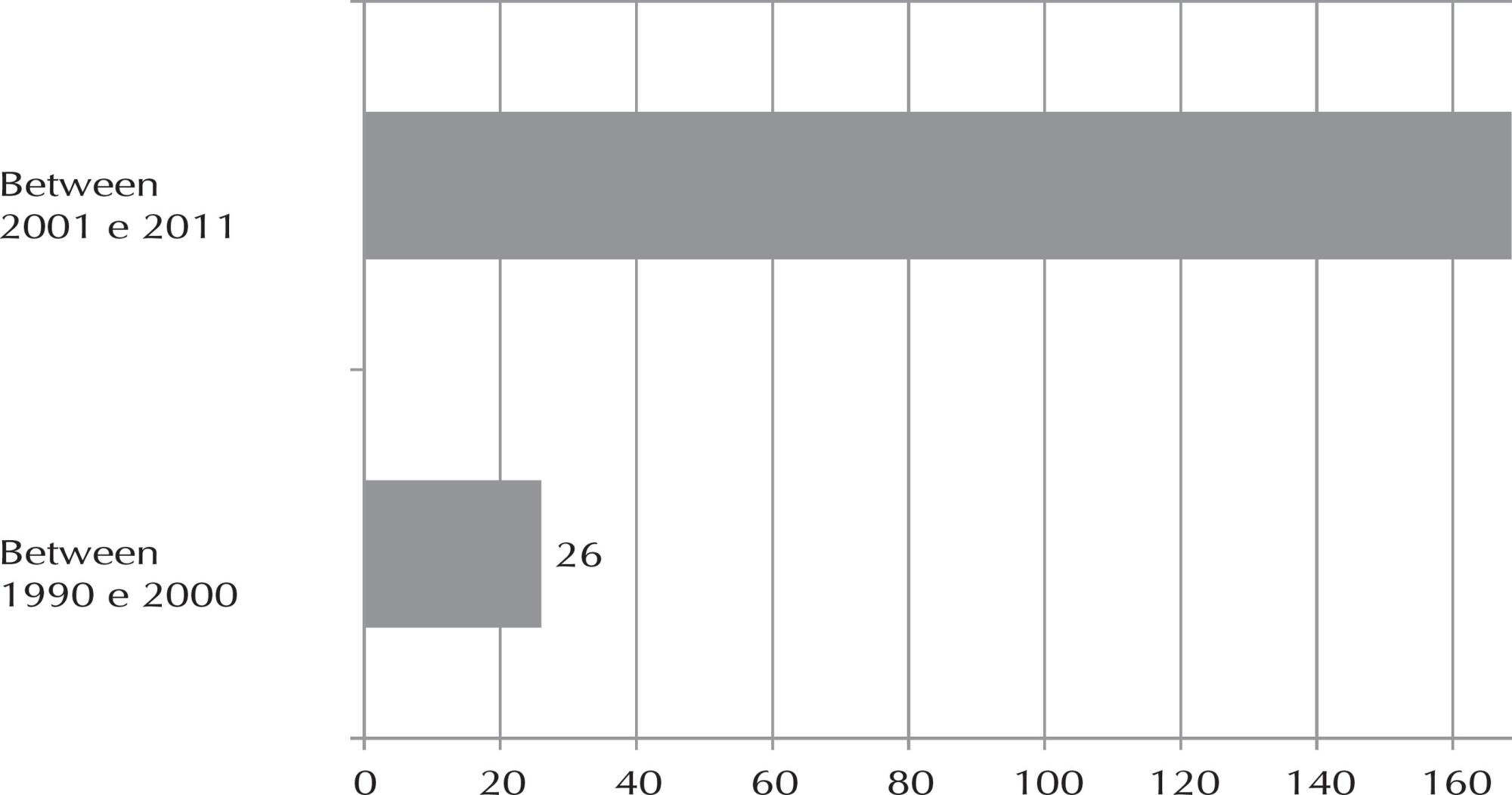
-
Knowing blood donation surroundings: Implications for nurse service in hemotherapy
Revista Brasileira de Enfermagem. 2015;68(1):32-39
Abstract
Knowing blood donation surroundings: Implications for nurse service in hemotherapy
Revista Brasileira de Enfermagem. 2015;68(1):32-39
DOI 10.1590/0034-7167.2015680105i
Views0See moreObjective:
the study aims at discussing the significations apprehended by the non-blood donators, considering the context and the consequences of the acting of the nurse in hemotherapy.
Method:
it is a qualitative approach, with theoretical frame of Symbolic Interactionism and Grounded Theory method. The data production was carried out by intensive interview with subjects of three sample groups of a University Hospital of Rio de Janeiro City.
Results:
the phenomenon originated two analysis categories: “Perceiving the blood matter” and “Reflecting about the blood donation campaigns”. It was observed that the environment of the donor is not composed by contact with the other and the information that it can achieve, including the media.
Conclusion:
these were the main basis for the knowledge of blood donation according to their beliefs, culture and values. Therefore, all these aspects must be considered by the nurse acting on donors capture.
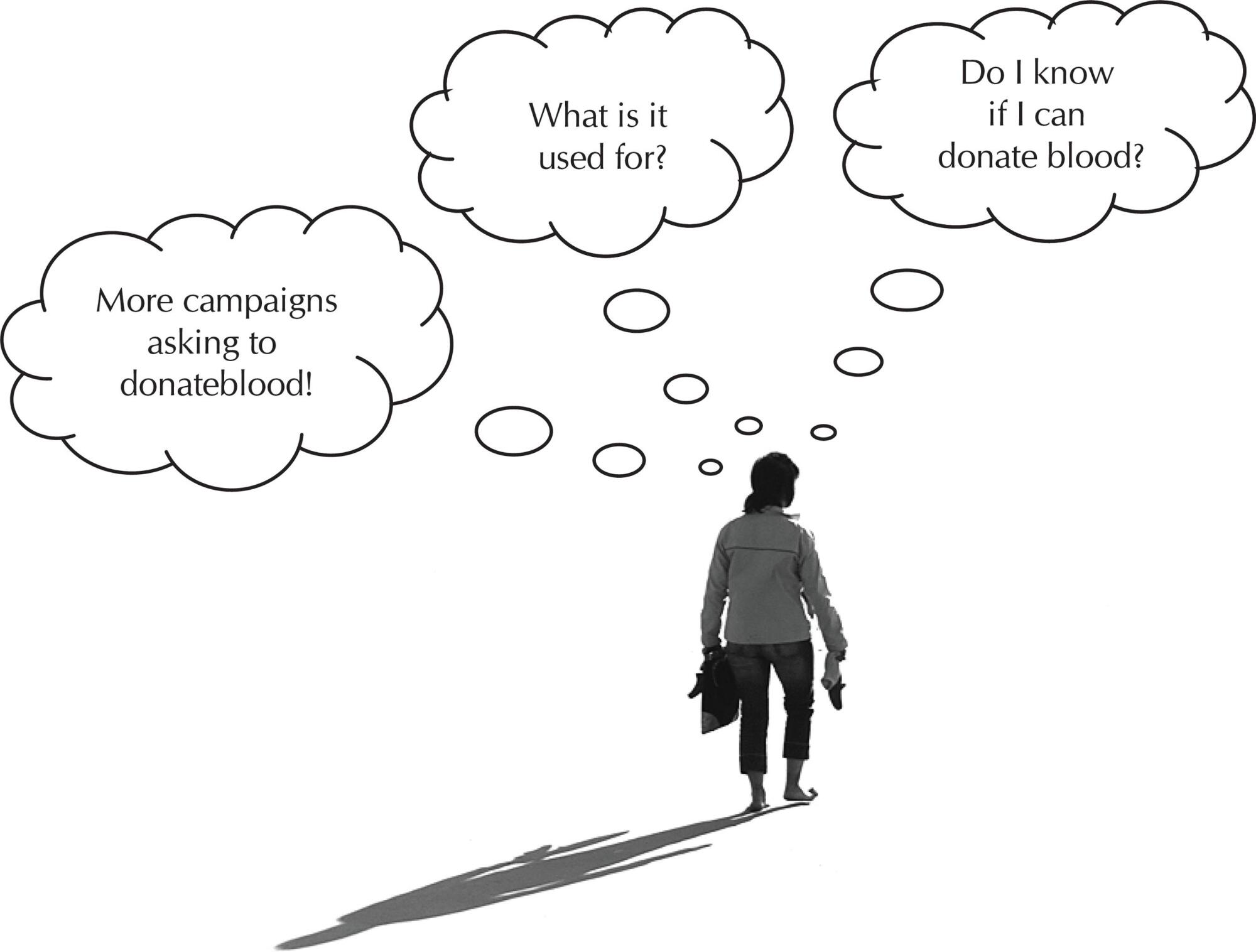
-
ORIGINAL ARTICLE09-20-2024
Risk assessment for postoperative complications in patients undergoing cardiac surgical procedures
Revista Brasileira de Enfermagem. 2024;77(4):e20230127
Abstract
ORIGINAL ARTICLERisk assessment for postoperative complications in patients undergoing cardiac surgical procedures
Revista Brasileira de Enfermagem. 2024;77(4):e20230127
DOI 10.1590/0034-7167-2023-0127
Views0ABSTRACT
Objectives:
to evaluate the risk of postoperative complications in cardiac patients.
Methods:
an evaluative study using the Tuman Score on medical records of 70 adult patients who underwent cardiac surgery at a University Hospital. The R for Windows software was used for the analyses. Descriptive statistics and bivariate analysis were employed to verify the association between the risk score and complications. The relative risk between the Tuman Score and postoperative complications was obtained through Quasi-Poisson regression, with a 95% confidence interval.
Results:
the majority of the patients were male (58.57%), aged between 41-64 years (50%), who underwent myocardial revascularization (50%). These patients were associated with a lower risk of postoperative complications (p=0.003), (p=0.008), and (p=0.000), respectively. High-risk patients had pulmonary complications (RR=1.32, p=0.002) and neurological complications (RR=1.20, p=0.047).
Conclusions:
preoperative risk assessment promotes qualified care to reduce postoperative complications.
Keywords:Cardiac Surgical ProceduresCardiovascular DiseasesCardiovascular NursingPostoperative ComplicationsRisk AssessmentSee more -
EXPERIENCE REPORT09-20-2024
Researchers’ experience in data collection with families of femicide victims
Revista Brasileira de Enfermagem. 2024;77(4):e20230119
Abstract
EXPERIENCE REPORTResearchers’ experience in data collection with families of femicide victims
Revista Brasileira de Enfermagem. 2024;77(4):e20230119
DOI 10.1590/0034-7167-2023-0119
Views0See moreABSTRACT
Objectives:
to describe researchers’ experience in collecting data from families of femicide victims.
Methods:
this descriptive, qualitative study took the form of an experience report and was conducted in Manaus, Amazonas, Brazil. It involved documentary consultation, training researchers, scheduling and conducting interviews, and using a field diary to record the researchers’ perceptions and experiences.
Results:
the descriptions and photographs of the crime scene were both distressing and impactful for the researchers. The mementos of the victims (including clothing, objects, and childhood photos) shown by their families were deeply moving. Identifying with these experiences facilitated listening to the stories told by the relatives. It was essential to maintain a non-judgmental attitude, acknowledge the loss, provide support for the suffering, and demonstrate a willingness to help.
Final Considerations:
the experience encompassed both theoretical and methodological aspects that were planned and executed in data collection, fostering the development of skills and sensitivity towards the cases. Beyond knowledge and preparation, researchers are expected to exhibit ethical conduct and empathetic capacity.
-
ORIGINAL ARTICLE09-20-2024
Factors associated with preventable infant mortality in 2020: a Brazilian population-based study
Revista Brasileira de Enfermagem. 2024;77(4):e20230072
Abstract
ORIGINAL ARTICLEFactors associated with preventable infant mortality in 2020: a Brazilian population-based study
Revista Brasileira de Enfermagem. 2024;77(4):e20230072
DOI 10.1590/0034-7167-2023-0072
Views0ABSTRACT
Objectives:
to identify factors associated with preventable infant deaths, classified as neonatal and post-neonatal.
Methods:
this is an epidemiological and population-based study relating to 2020. Data from the Mortality Information System (MIS) and the preventability classification proposed in the Brazilian Health System List of Causes of Deaths Preventable by Interventions were used.
Results:
prematurity, living in the North and Northeast regions and the occurrence of the event at home were associated with preventable neonatal deaths. To the avoidable post-neonatal component, death outside the hospital, low maternal education and children of brown or yellow color/race were associated.
Conclusions:
the main risk factor associated with preventable deaths was prematurity, in the case of neonatal death. Low maternal education and occurrence outside the hospital were associated with post-neonatal deaths.
Keywords:Epidemiological StudiesHealth Care QualityHealth Information SystemsInfant MortalityVital StatisticsSee more -
EDITORIAL09-09-2024
Potential of Artificial Intelligence in Evidence-Based Practice in Nursing
Revista Brasileira de Enfermagem. 2024;77(5):e770501
Abstract
EDITORIALPotential of Artificial Intelligence in Evidence-Based Practice in Nursing
Revista Brasileira de Enfermagem. 2024;77(5):e770501
DOI 10.1590/0034-7167.2024770501
Views0Evidence-based practice (EBP) has established itself as a fundamental pillar in nursing, driving effective clinical decision-making based on high-quality scientific research. The primary goal of EBP is to ensure that patients receive the most appropriate and safe care, based on the best available evidence. In this context, knowledge synthesis methods are essential tools for EBP, […]See more -
REVIEW09-06-2024
Parents’ or legal guardians’ beliefs and attitudes about childhood vaccination: a scoping review
Revista Brasileira de Enfermagem. 2024;77(4):e20240126
Abstract
REVIEWParents’ or legal guardians’ beliefs and attitudes about childhood vaccination: a scoping review
Revista Brasileira de Enfermagem. 2024;77(4):e20240126
DOI 10.1590/0034-7167-2024-0126
Views0See moreABSTRACT
Objective:
to map scientific evidence about perceptions, beliefs, knowledge and attitudes of parents or legal guardians of children under 5 years of age regarding routine childhood vaccination.
Methods:
a scoping review, conducted in accordance with the JBI framework. The searches were carried out in the PubMed/MEDLINE, Web of Science, Scopus and LILACS databases. A total of 5,535 studies were returned and 77 were selected, which met the inclusion criteria.
Results:
perceptions related to interaction with healthcare professionals and services, with family organization and structure, with social interaction and public policies, cultural, religious and personal beliefs, knowledge about vaccination schedule, vaccination and immunization process and sources of information are the main factors mapped and which can positively or negatively influence parents’ or legal guardians’ attitudes towards vaccinating children.
Conclusions:
the findings allow us to identify factors related to parents’ perception and beliefs about childhood vaccination.
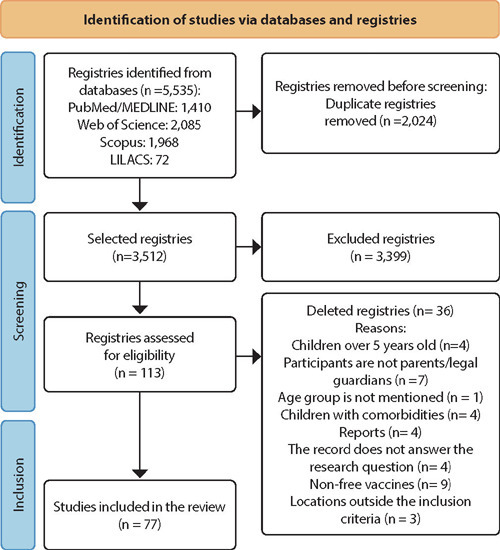
-
ORIGINAL ARTICLE09-06-2024
Construction and validation of an instrument for event-related sterility of processed healthcare products
Revista Brasileira de Enfermagem. 2024;77(4):e20240021
Abstract
ORIGINAL ARTICLEConstruction and validation of an instrument for event-related sterility of processed healthcare products
Revista Brasileira de Enfermagem. 2024;77(4):e20240021
DOI 10.1590/0034-7167-2024-0021
Views0See moreABSTRACT
Objective:
To construct and validate an instrument to assess events related to maintaining the sterility of processed healthcare products.
Methods:
This methodological study developed the instrument through analysis by a panel of experts, focusing on the integrity of commonly used packaging: spunbond-meltblown-spunbond and medical-grade paper. The instrument was analyzed using the Content Validity Index and Content Validity Ratio (≥ 0.80) and modified Kappa (≥ 0.74). The instrument underwent pre-testing.
Results:
Six experienced professionals participated in the expert panel. After two rounds, the final version of the instrument contained five dimensions. In the pre-test, 30 nursing professionals participated, of whom 86.67% considered the instrument good, and 90% found it understandable.
Conclusion:
The construction and validation followed literature recommendations. The instrument is available, aiding in the safe use of processed healthcare products.
-
ORIGINAL ARTICLE09-06-2024
Reflective practice of nurse residents in the teaching-learning process in teaching hospitals
Revista Brasileira de Enfermagem. 2024;77(4):e20230540
Abstract
ORIGINAL ARTICLEReflective practice of nurse residents in the teaching-learning process in teaching hospitals
Revista Brasileira de Enfermagem. 2024;77(4):e20230540
DOI 10.1590/0034-7167-2023-0540
Views0See moreABSTRACT
Objective:
To analyze reflective practice in the teaching-learning process of nurses in residency programs in teaching hospitals in Minas Gerais, Brazil.
Methods:
Case study, based on the reflective practice framework, conducted in two teaching hospitals. Observation and interviews were conducted with first and second-year residents, and five participants were included for in-depth analysis, with their data subjected to frequency distribution analysis and Critical Discourse Analysis.
Results:
In 519 observed activities, elements of reflection were identified in 22.2%, especially active listening and expression of doubts. Discourses indicated practice as the best moment for teaching-learning due to its potential to generate reflections. Learning by doing and case discussion were considered potential strategies for reflective learning.
Conclusion:
Know-in-action reflection was evidenced as the predominant formative aspect for residents, with few opportunities for reflection on reflection-in-action.
-
ORIGINAL ARTICLE09-06-2024
Middle-Range theory of the nursing diagnosis of sedentary lifestyle in young adults
Revista Brasileira de Enfermagem. 2024;77(4):e20230516
Abstract
ORIGINAL ARTICLEMiddle-Range theory of the nursing diagnosis of sedentary lifestyle in young adults
Revista Brasileira de Enfermagem. 2024;77(4):e20230516
DOI 10.1590/0034-7167-2023-0516
Views0See moreABSTRACT
Objective:
To construct a middle-range theory for the nursing diagnosis of Sedentary Lifestyle in young adults.
Methods:
A methodological study for the validation of a nursing diagnosis based on a Middle-Range Theory, carried out in six stages: definition of the approach; definition of theoretical-conceptual models; definition of main concepts; development of a pictorial scheme; construction of propositions; establishment of causal relationships and evidence for practice. The theory construction was operationalized through an integrative review and supported by Roy’s adaptation model.
Results:
Three essential attributes were identified; 10 antecedents; 7 clinical consequences; a pictogram, 9 propositions, and 11 causal relationships and evidence for practice.
Conclusion:
The middle-range theory for the nursing diagnosis of Sedentary Lifestyle in young adults was constructed, expanding the understanding of this phenomenon, to be applied in clinical practice by nurses.
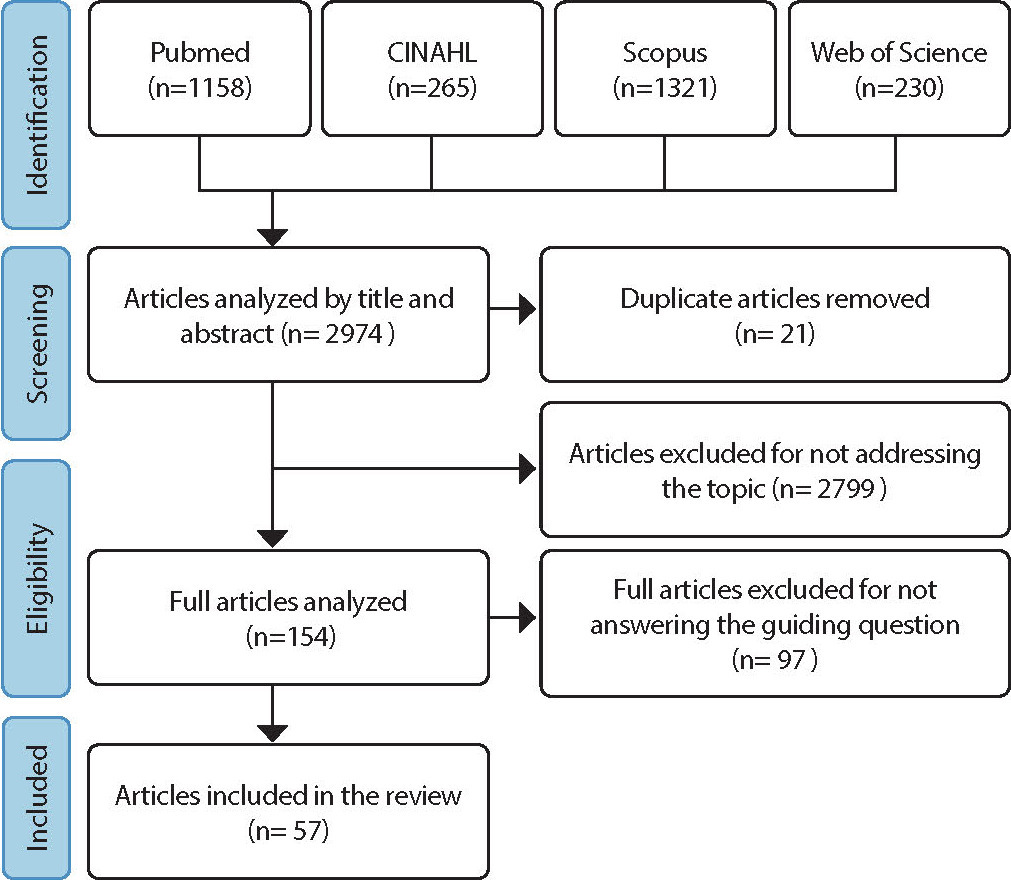
Search
Search in:
Nuvem de Tags
Aged (144) Atenção Primária à Saúde (239) COVID-19 (104) Cuidados de Enfermagem (269) Educação em Enfermagem (151) Educação em Saúde (139) Enfermagem (930) Estudos de Validação (131) Health Education (144) Idoso (208) Mental Health (149) Nursing (987) Nursing Care (306) Patient Safety (151) Primary Health Care (284) Qualidade de Vida (104) Quality of Life (106) Saúde Mental (145) Segurança do Paciente (150) Validation Studies (108)




